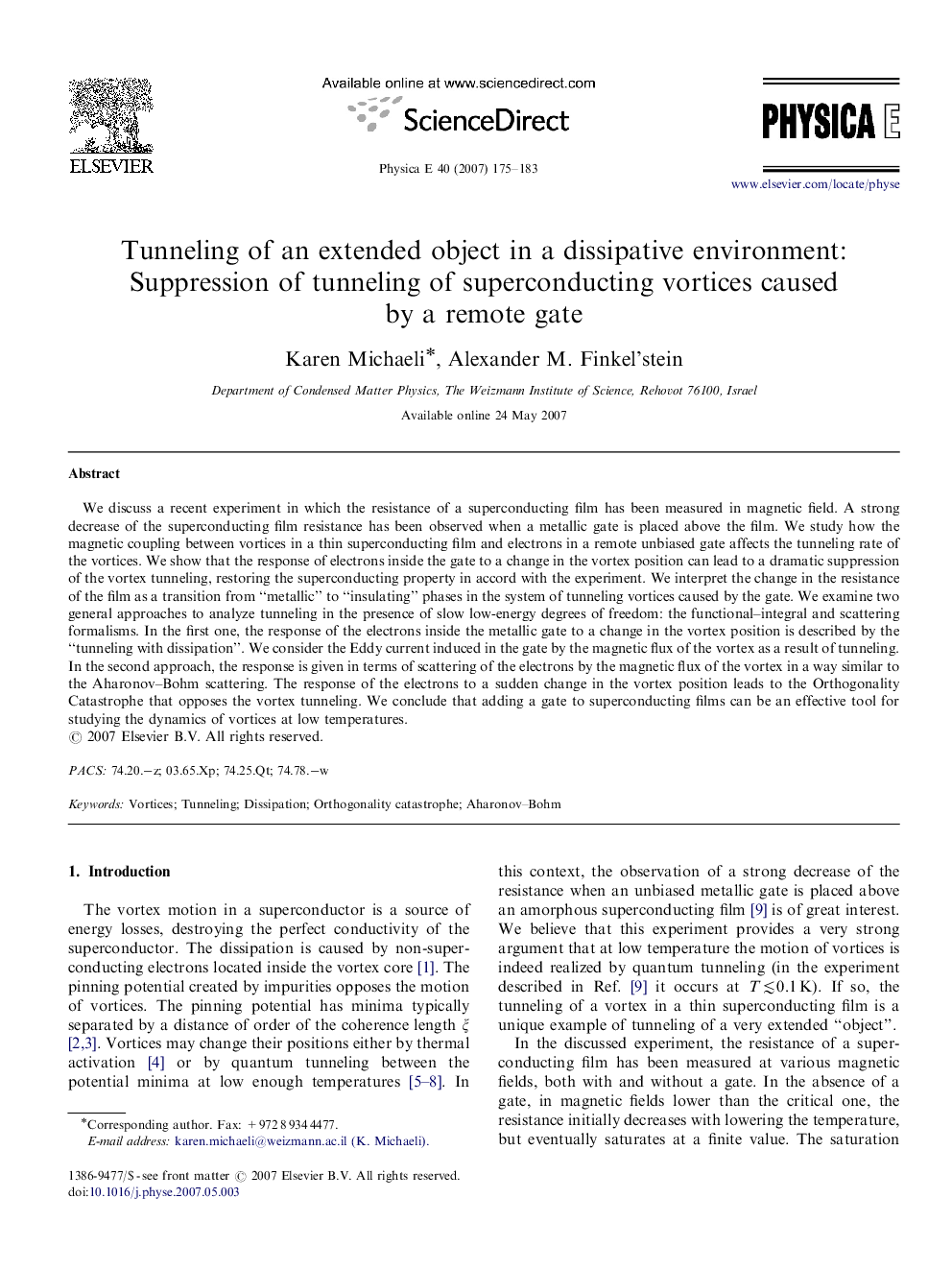| Article ID | Journal | Published Year | Pages | File Type |
|---|---|---|---|---|
| 1546736 | Physica E: Low-dimensional Systems and Nanostructures | 2007 | 9 Pages |
Abstract
We discuss a recent experiment in which the resistance of a superconducting film has been measured in magnetic field. A strong decrease of the superconducting film resistance has been observed when a metallic gate is placed above the film. We study how the magnetic coupling between vortices in a thin superconducting film and electrons in a remote unbiased gate affects the tunneling rate of the vortices. We show that the response of electrons inside the gate to a change in the vortex position can lead to a dramatic suppression of the vortex tunneling, restoring the superconducting property in accord with the experiment. We interpret the change in the resistance of the film as a transition from “metallic” to “insulating” phases in the system of tunneling vortices caused by the gate. We examine two general approaches to analyze tunneling in the presence of slow low-energy degrees of freedom: the functional-integral and scattering formalisms. In the first one, the response of the electrons inside the metallic gate to a change in the vortex position is described by the “tunneling with dissipation”. We consider the Eddy current induced in the gate by the magnetic flux of the vortex as a result of tunneling. In the second approach, the response is given in terms of scattering of the electrons by the magnetic flux of the vortex in a way similar to the Aharonov-Bohm scattering. The response of the electrons to a sudden change in the vortex position leads to the Orthogonality Catastrophe that opposes the vortex tunneling. We conclude that adding a gate to superconducting films can be an effective tool for studying the dynamics of vortices at low temperatures.
Related Topics
Physical Sciences and Engineering
Materials Science
Electronic, Optical and Magnetic Materials
Authors
Karen Michaeli, Alexander M. Finkel'stein,
